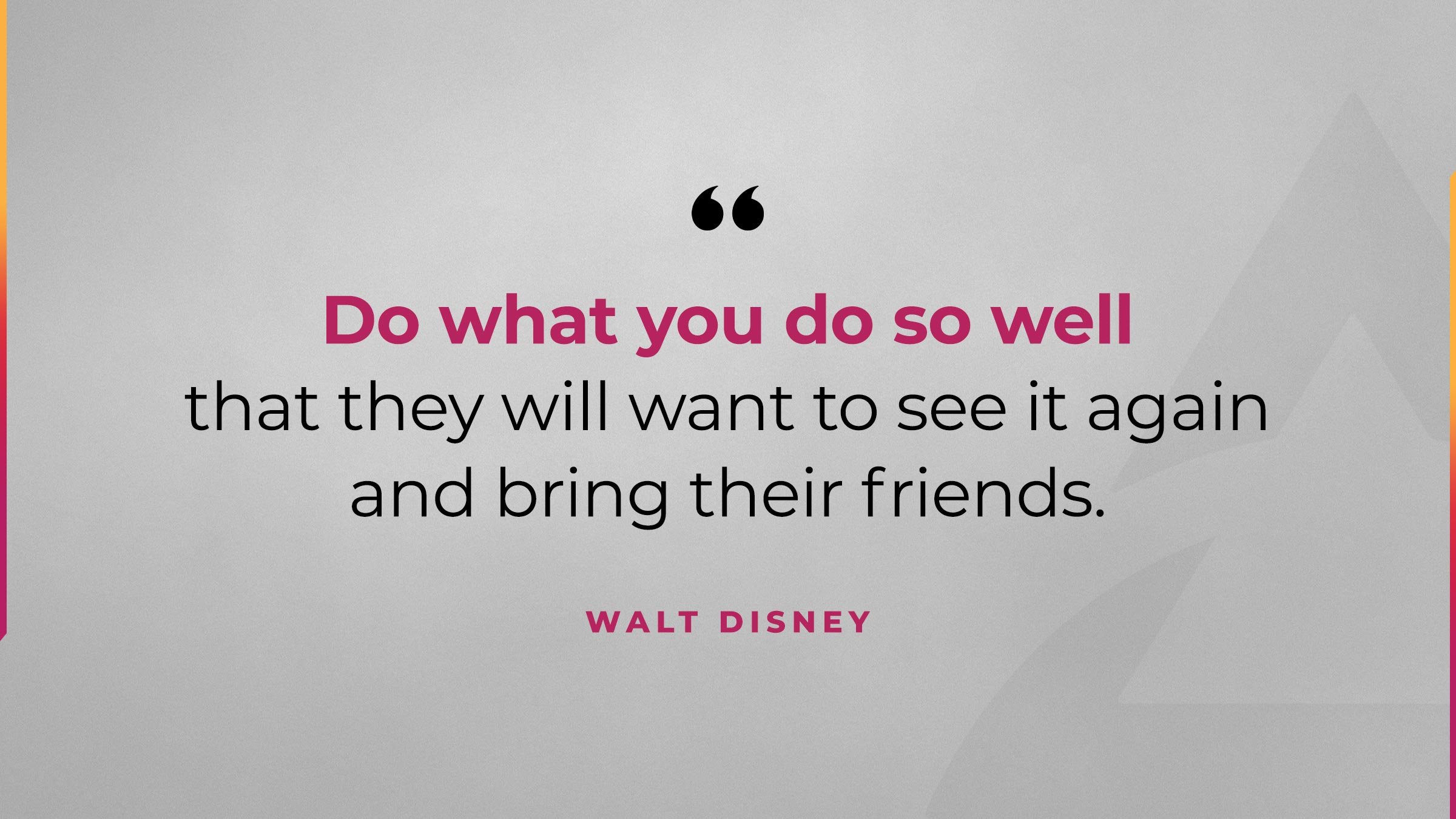Customer Retention: How Can You Measure & Improve It?

Depending on which study you read, it could be 25 times more expensive to obtain new customers than to keep the ones you have. If you invest that much time and money in getting customers, it makes perfect sense that you keep them.
Customer retention is a vital metric for your business. So how do you succeed in customer retention, and how do you measure it?
Having a good sales team and a fantastic marketing process is core to this. Not sure how to do that? Our team at The Entourage can give you the knowledge and skills you need through our sales training and marketing training, both of which are a part of our comprehensive business coaching and training.
What is customer retention?
Customer retention is a business’s ability to keep its customers over time. It is a percentage metric calculated at the end of a given time period, usually each quarter.
Customer retention is influenced by churn rate, which is the rate at which customers leave the business either through canceling subscriptions or a contract, or not coming back to purchase.
Why is customer retention essential to your business?
Customer retention strategies are important because of the statement we gave you at the start of this article. It costs a lot more money to get new customers than it does to service your current customers.
Customer retention shows brand loyalty and the willingness of your customers to spend more money with you.
Were you thinking of increasing your subscription fees by a few dollars next month? The loyal customers who love what you offer will absorb the new costs.
Loyal customers who have had an ongoing good experience with you are more likely to spend more money than new customers who are just getting to know you.
How to make customer retention?
There is a formula you can use to calculate your customer retention - [(the number of customers at the end of a period) minus (the number of customers acquired during that period)] divided by (the number of customers at the start of the period) multiplied by 100 to get a percentage.
Let’s imagine that at the start of the quarter you had 70 customers. During that quarter you gained 10 new customers but lost 5 due to churn.
[(75-10)/70)] x 100 = 93% (rounded up)
That is a pretty good customer retention rate.
You can break this down into different sales channels if you have specific products or services that customers sign up for. If you had three levels of service, such as Gold, Silver, and Bronze, you can do a customer churn rate audit on all three levels and see which level is succeeding more than the others.
This kind of audit can help you decide where to spend your marketing budget to increase customer retention.
What is a good customer retention rate?
This answer is tricky as it can depend on the industry you’re in. The general answer is - the higher the percentage when doing the above formula, the better your retention rate. A high percentage is good.
Checking sites such as Profit Well, the industry average of customer retention for retail is 63%, I.T. Services at 81%, and media just a little bit higher at 84%.
How do you retain more customers?
We’ve told you why it is important to retain customers - to save money and build brand loyalty, so how do you go about actually keeping customers? There are 4 main strategies you can use to achieve this.
Improve customer experience
The better an experience a customer has with your company, the more likely they will stay. This customer experience can be in many different forms:
- Making it easy for customers to shop and buy from you
- Quick resolution times on inquiries or complaints
- Customised experience based on previous purchases
- Straightforward answers to questions
- You listen to them when they communicate
If you make it difficult to navigate your website, or tricky to get in touch with you when something goes wrong, customers will leave to find someone who ‘cares’.
Similarly, communication tools like a softphone system can enhance customer interactions by providing real-time, efficient communication channels. These solutions ensure that companies remain responsive to customer needs and feedback, thereby aligning more closely with their definition of quality. By improving both external customer communication and internal collaboration, these tools help companies maintain a high standard of service and adaptability in a changing market environment.
Make the onboarding process easy
If you’ve won a person over and they want to join, make the process of joining you and getting onboard your brand as smooth and pain-free as possible. Offer the chance to speak to someone if the process is tricky so that you can guide them through the process.
If you need to re-subscribe a customer after a certain period, or they want to upgrade, again, make this process easy to navigate. The harder it is to onboard a customer, the higher the chances they’ll churn out.
Keep the line of communication open!
Customer satisfaction surveys, newsletters, follow-up communication when there has been an issue, are all ways to show you care about your customers.
Rapid response to queries is also an excellent way to have a dialogue with your clients. They want to know you’re there for them in a crisis. Many successful businesses scale their support capabilities through customer service outsourcing while maintaining high response standards and personalized care.
These channels of communication can include social media. Responding to comments and queries, having a conversation with your customers through your socials, shows that you’re human and not a faceless corporation.
This is also just as important with reviews you receive. Received a good review, thank them for it! Received a bad review? Make sure you respond appropriately and address the problem they faced. You never know whose mind you might change from just speaking with them!
And ensure that your brand personality matches your brand values. It's important to have a set brand voice that's consistent across all your channels and across all your team members who respond to customers. If you've ever had a conversation with a surf brand, you’ll know what we mean.

Reward loyal customers
If you read this title and automatically thought of a loyalty rewards scheme, we ask that you think outside the box. Many people have loyalty fatigue over a rewards scheme that rewards the company with many purchases, but not the customer.
How can you show appreciation to your loyal customers:
- Discounts through subscription emails
- Cheaper or free postage
- Membership only events
- Previews or members get the first chance to buy new stock
- If you offer high-volume, low-cost products, a loyalty card where the Xth item is free can encourage loyalty
- Referral rewards are often a great way to keep customers loyal
When thinking of a reward system, think about what you do better than your competition. What can you offer your customers to stop them from moving to your competitors?
Conclusion
With all the economic and profitable reasons to keep your customers loyal to your brand, it's no wonder some big companies have entire teams built around customer retention. It is big business, which you don’t have to fight for, as the customers already like you.
Customer loyalty can be an enjoyable thing. You build the community, and customers can begin to think of you as friends, can spend more with you just because they like you and your brand personality.
It's a good sales professional who can bring new customers in and keep them for a long lifespan. The Entourage can help you become one of these amazing people through our Business Sales Training. Click on through, have a read and sign up today.
Related Posts
Join the movement.
Your Entourage journey starts here. Join Australia's largest community of over 500,000 business owners and entrepreneurs, and receive instant access to exclusive content and updates delivered straight to your inbox.




